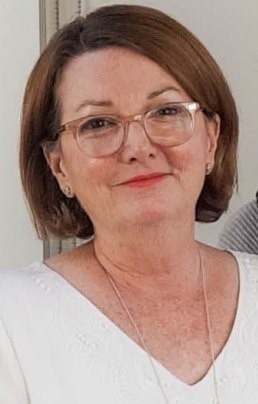The power of knowledge
A blog post written by Kim Devery, Project Lead of End-of-Life Essentials, Senior Lecturer and Head of Teaching Section, Palliative Care, Flinders University
Teacher, facilitator and guide, that’s my job at Flinders University. I guide doctors, nurses and allied health professionals in postgraduate studies, to assist them in understanding their own strengths and challenges and strengthen their capacity in delivering health care services to patients who are at the end of life. I also lead a major national education project, End-of-Life Essentials, which is free and evidence-based, and aims to increase professionals’ skill and confidence in end-of-life care in acute hospitals.
The thousands and thousands of doctors, nurses and allied health professionals who seek Flinders University’s education on end-of-life and palliative care work in various health care systems. Some of these health systems struggle to provide quality care at the end of life. Our students, aware and proactive professionals, seek to change their own capacity and the systems in which they work. They strive to be the change that is needed across Australia. Why is change needed?
Slow dying and death, in very old age caused by chronic illness is a relatively new phenomena. The rise of medical science, vaccination and public health measures like clean water have not only altered the way we live but also changed the way we die1. Today’s leading causes of death are dementia, cardiac disease and cancer. In the 21st century Australia, people live with these chronic illnesses for many years before they eventually die.
These illnesses are not curable, but they can be managed by our health care systems for some time. This means of course that many older people may be aware at some level that they are at the end of life and this phase may continue for several years.
Today, older people have much time on their hands living with decreased physical function, ill health, dependency on others for day-to-day needs and an awareness of their own mortality2.
However you don’t need to go back one hundred years to see the change in our patterns of dying. Research by McNeil and colleagues3, published this year, illustrates the dramatic changes in our mortality since the 1970s. These researchers compared the mortality rate of 100,000 men and women between 20 and 70 years of age spanning the decades 1960 -2010. What did they discover?
A dramatic shift in the age of when we die - 70 is the new middle age now. In 1970, 50% of men died before the age of 70 years, in 2010 only 18% of men had died before 70. Similarly, 28% of women had died before 70 and this has now fallen to 11%. This means that Australians are living with chronic ill health and significant disability for many years before they die. Dying takes time, the rise of ageing and chronic ill health means that the majority of people in Australia, have a heightened sense (thinking, feeling and preparing) of their own end of life for many, many years.
In being the change, doctors, nurses and allied health professionals require trustworthy and up-to-date evidence to inform their practice and meet the growing needs of patients at the end of life. These professionals are preparing to respond to questions and issues that go way beyond physical symptoms. Questions spanning existential, emotional and the social concerns and issues can be common when delivering care at the end of life4.
Having conversations and responding to patient questions like “What will happen to me?” or “How long do I have left?” or “How do I tell my son?” require confidence. Professionals look to CareSearch for the evidence to build their own confidence, knowledge and ultimately be the change that is needed by our population who is aged and dying.
References
1. Jones, DS, Podolsky, SH, Greene, JA. The burden of disease and the changing task of medicine. The New England Journal of Medicine, 2012 [cited 20 July 2018]; 366: 2333-2338. doi: 10.1056/NEJMp1113569.
2. Gale, D. Changing the choice architecture of ageing. The New Bioethics: A Multidisciplinary Journal of Biotechnology and the Body, 2014 [cited 20 July 2018]; 20(2), 124-140.
3. Curtis AJ, Ofori-Asenso R, Gambhir M, McNeil, J. Mortality among middle-aged Australians, 1960–2010: implications for prevention policy Med J Aust 2018 [cited 20 July 2018]; 208 (10): 444-445.
4. Smith R. A good death. BMJ: British Medical Journal 2000 [cited 20 July 2018] vol. 320, no. 7228, pp. 1-2.

Kim Devery, Project Lead of End-of-Life Essentials, Senior Lecturer and Head of Teaching Section, Palliative Care, Flinders University